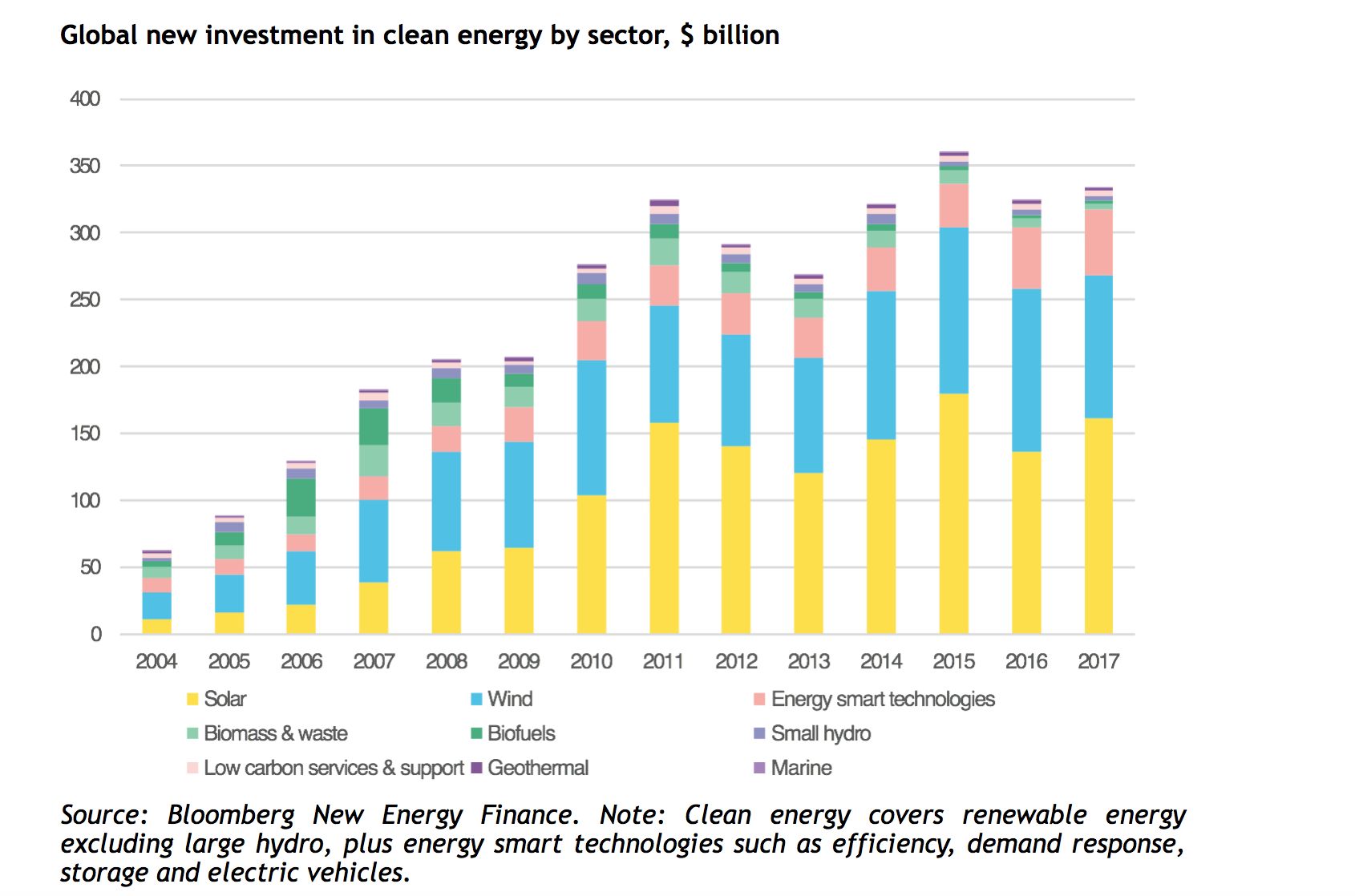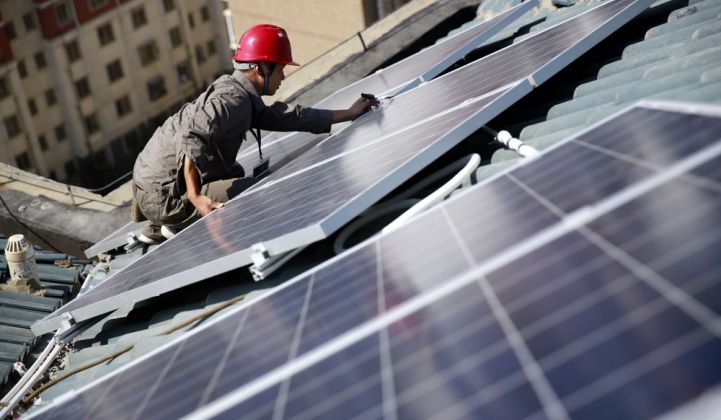China hit record levels of clean energy investment in 2017, according to the latest annual analysis from Bloomberg New Energy Finance.
The country increased its clean energy spending last year by 24 percent, to a total of $132.6 billion. Most of that money, $86.5 billion, went to solar. BNEF estimates China installed a “runaway” 53 gigawatts of PV capacity in 2017, which is approximately 20 more gigawatts than analysts originally projected.
GTM Research estimates the country’s total installs just under that number, at 52 gigawatts.
And China wasn’t the only record-setter, according to BNEF.
Australia grew renewables investment by 150 percent, to a record $9 billion. Energy-smart technologies, such as smart meters and battery storage, also hit record-high investment at $48.8 billion, an increase of 7 percent over 2016.
All told, clean energy investment reached a record annual total of 160 commissioned gigawatts. Last year's total annual investment, $333.5 billion, equals the second highest after 2015.

“The 2017 total is all the more remarkable when you consider that capital costs for the leading technology -- solar -- continue to fall sharply,” said Jon Moore, chief executive at BNEF.
According to GTM Research Senior Global Solar Analyst Tom Heggarty, year-over-year global installed solar PV costs fell 12 percent in 2017. At the same time, Heggarty said, “Installations have risen significantly, in large part due to the 52 gigawatts of PV installed in China.”
Heggarty attributes China’s gains to an increased demand for distributed solar, which China defines as any installation below 20 megawatts. Distributed solar there grew from 4 gigawatts in 2016 to over 18 gigawatts last year, according to GTM Research.
“The National Energy Administration in China has been looking to increase smaller-scale installations, closer to large demand centers in eastern China, in order to try to alleviate some of the current issues with solar power generation being curtailed,” Heggarty said in an email. “The NEA’s Poverty Alleviation Program, designed to incentivize the installation of solar PV in impoverished areas of China, has also contributed to the impressive levels of growth.”
BNEF credits the expansion in China’s solar market to reluctance from regulators to cut off subsidies for new utility-scale projects outside government quotas, as well as the rising prevalence of distributed solar on sites such as rooftops and industrial parks, driven by falling costs.
The figures contradict earlier 2017 projections that the country's solar market would decline after a peak year in 2016. Both BNEF and GTM Research projected China’s market would see 2017 installations around 30 gigawatts.
Instead, China’s spending on solar accounted for half the world’s $160.8 billion total. Global solar investment grew 18 percent in 2017, accounting for 48 percent of total global clean energy investment.
In other findings from the BNEF report, wind investment came in under solar at $107.2 billion in total investment. That sector showed a 12 percent decrease in spending from 2016 levels. According to MAKE Consulting, GTM's sister company, global wind installations fell by 6 percent year-over-year.
Mexico’s clean energy investment ballooned 516 percent to $6.2 billion. The United States also increased its spending with a modest bump of 1 percent over 2016, to a total $56.9 billion. The United Kingdom, Germany and Japan saw the most drastic drops in investment of 56 percent, 26 percent and 16 percent, respectively.
Acquisition and refinancing of existing projects reached new peaks in 2017, at $87.2 billion. The largest deal went to Brookfield Asset Management when it acquired a majority stake in YieldCo Terraform Power for $4.7 billion. This activity is a positive sign indicating market maturity, according to BNEF.
“It is notable that acquisition activity in clean energy has been in excess of $100 billion in each of the last three years,” said BNEF analyst Abraham Louw in a statement. “The fact that generating assets, in particular, are in growing demand from buyers is a sign of a maturing sector.”




